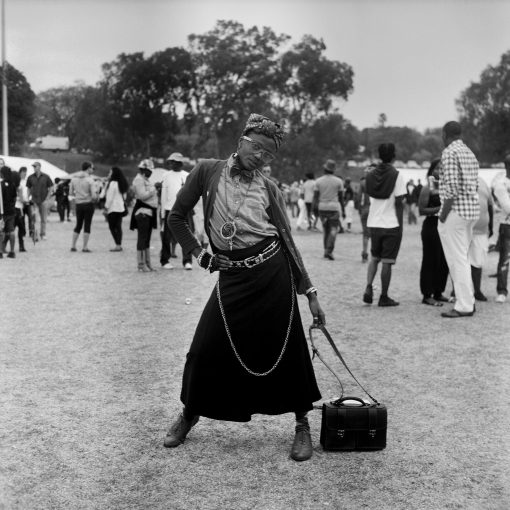Sabelo Mlangeni: "Portraying the Outsider"
Yesterday's International Transgender Day of Visibility takes place annually on March 31st to honor and celebrate transgender people, who continue to experience worldwide discrimination to this day. The term transgender is composed of the Latin trans (beyond) and the English gender, thus describing individuals who do not identify — or not exclusively — with the sex and gender attributed to them at birth.
Artistic expressions that address issues of diversity are compelling alternative voices, drawing attention to the rights of lesbian, gay, bisexual, transgender, transsexual, queer and intersex life (LGBTQI). One of these is South African photographer Sabelo Mlangeni. Born in 1980, Mlangeni describes his work as follows: "When I work I'm always mindful of the stereotyping that South Africa — and Africa in general — is often subject to in art and the media. […] I try to bring another aspect to my country and my continent, by portraying the outsider, those people who aren’t usually given a voice."
On March 20st, the International Lesbian, Gay, Bisexual, Trans and Intersex Association (ILGA) launched the 13th issue of its State-Sponsored Homophobia Report, which summarizes data on LGBTQI rights worldwide. Defining the report as a tool in the fight for equality and inclusion, author Lucas Ramón Mendos emphasizes that in 70 UN member states sexual acts between people of the same sex are criminalized. In 44 of these nations, the application of the laws does not take into account the gender of those affected. Of these, six employ the death penalty to the above-mentioned acts. In another five countries, this punitive measure is still technically possible. To date, the freedom to express gender identity and sexual orientation is legally restricted in 32 countries. Just last week, the sultanate of Brunei decreed a drastic change in the law: on the basis of Sharia, homosexuals are now threatened with the death penalty by stoning.
The ILGA report shows that the situation of LGBTQI rights on the African continent is particularly precarious. Officially, South Africa is regarded as the most liberal country in Africa: homosexuals have all basic rights enshrined by the constitution, and in 2006 same-sex marriage was legalized. However, this legalization process did not automatically lead to social acceptance and integration. South African LGBTQI individuals are still vulnerable to transphobic and homophobic violence as well as social stigmatization.
In his works, Mlangeni addresses the invisibility or visibility of minorities, the politics of the gaze, as well as new ideas of community and nationality. Generally, he uses the medium of photography to represent complex human experiences. He criticizes many Africans for negating the existence of the LGBTQI community or defining it especially un-African.
In 2016, The Walther Collection's exhibition Close to Home: New Photography from Africa featured six black and white photographs of Mlangeni's "Black Men in Dress." The images were taken in 2010 and 2011 during the Gay Pride parade in Johannesburg and Soweto, an event which takes place annually in various countries around the world, and calls for freedom, individuality and fundamental rights for all people — irrespective of their gender identity and sexual orientation.
"Black Men in Dress" reminds the artist of his own childhood: "Most communities had what we call 'uSi'bhuti'. This is a term used to describe a boy who behaves like a girl. Why then do we hate these boys when they have grown up to be men who dress as women? Why do we turn and call them names, pretending that we've never seen it?" The self-aware way in which people pose for the photographer contradicts the above-mentioned opinion — widespread in many African countries — that homosexuality is un-African but an import from the West. The artist confronts not only his own society, but also the Western viewer with the dominant, stereotyped image of African identity. The impressive portraits show pride, courage, beauty and style. The curator Hansi Momodu-Gordon describes the series as a reminder "of the possibility of beauty in the midst of the mundane, and of gender identity that refuse to fall neatly one way or the other." The choice of the medium of black and white photography obscures the bright colors and costumes typically associated with images of Pride. The artist thereby shifts the focus to the strong, often S-line poses of his models as well as to the aim of this event: turning the Outsider into an Insider.
– Livia Wermuth



